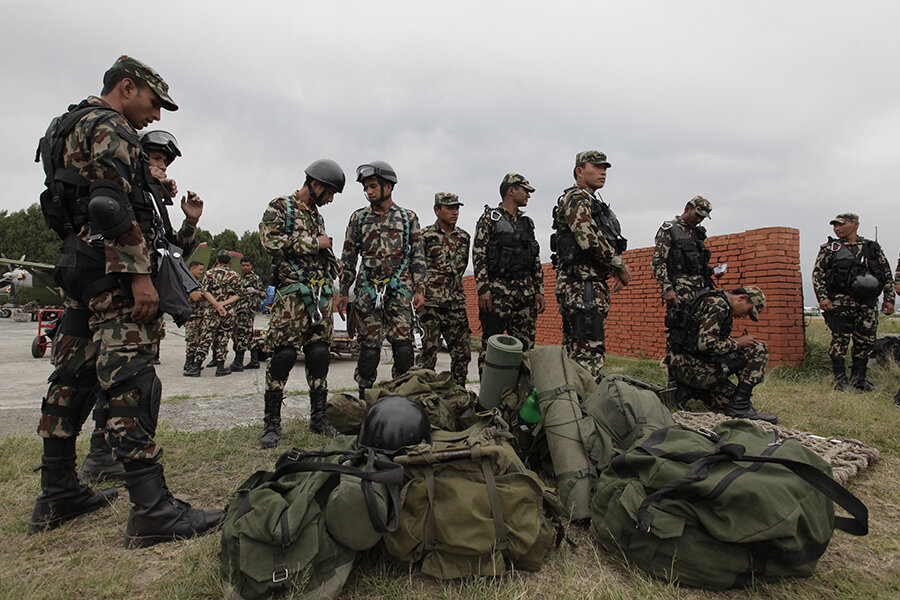US Marine helicopter crashes in Nepal: 3 bodies recovered
| Kathmandu, Nepal
Nepalese rescuers on Friday found three bodies near the wreckage of a US Marine helicopter that disappeared earlier this week while on a relief mission in the earthquake-hit Himalayan nation, and officials said it was unlikely there were any survivors from the crash.
"The wreckage of the helicopter was found in pieces and there are no chances of any survivors," Nepal's Defense Secretary Iswori Poudyal said. He gave no details about the nationalities of the three victims, only saying their remains were charred.
The helicopter was carrying six Marines and two Nepalese army soldiers.
A separate team sent by the US Marines also said they identified the wreckage as the missing helicopter, the UH-1 "Huey."
"The assessment of the site is ongoing and a thorough investigation will be conducted," a statement from the Marine-led joint task force said.
The wreckage was found 15 miles from the town of Charikot, near where the aircraft had gone missing on Tuesday while delivering humanitarian aid to villages hit by two deadly earthquakes, according to the US military joint task force in Okinawa, Japan.
The area is near Gothali village in the district of Dolakha, 50 miles northeast of Nepal's capital Kathmandu.
The discovery of the wreckage, first spotted by Nepalese ground troops and two army helicopters Friday, followed days of intense search involving US and Nepalese aircraft and even US satellites.
The US relief mission was deployed soon after a magnitude-7.8 quake hit April 25, killing more than 8,200 people. It was followed by another magnitude-7.3 quake on Tuesday that killed 117 people and injured 2,800.
The helicopter had been delivering rice and tarps in Charikot, the area worst hit by Tuesday's quake. It had dropped off supplies in one location and was en route to a second site when contact was lost.
US military officials said earlier this week that an Indian helicopter in the air nearby had heard radio chatter from the Huey aircraft about a possible fuel problem.
A total of 300 US military personnel have been supporting the aid mission in Nepal, which includes three Hueys, four Marine MV-22B Ospreys, two KC-130 Hercules and four Air Force C-17 Globemaster heavy-lift aircraft.
The Huey helicopter that crashed was from Marine Light Attack Helicopter squadron 469 based at Camp Pendleton, California.








